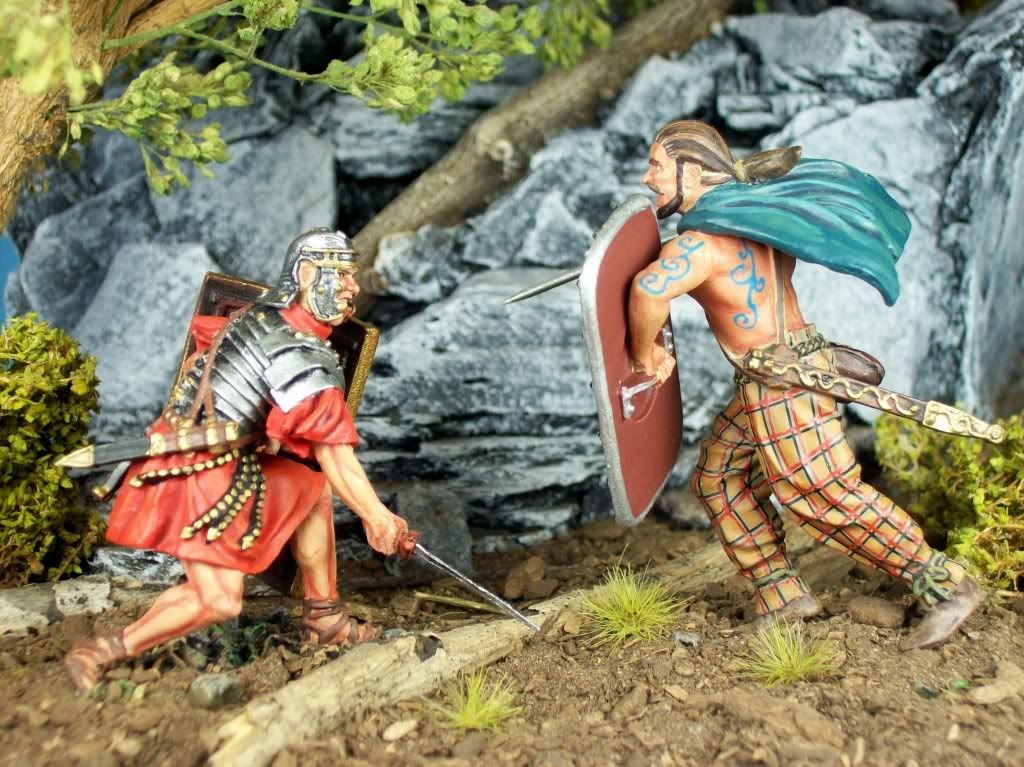Mark, I'm no Conte basher, have plenty of his figures, but his gladius is no where close to being accurate. The CS gladius is almost spot on. I had a replica Pompeii Gladius, hand made for me by Albion Arms about 10 years ago, with specs from a museum gladius. The blade is 20" long, 2'' wide and very thin. The main function of a gladius was stabbing, in fast and out, very hard to do with a longer and heavier sword. It was not meant to be a slashing sword like the longer and heavier Barbarian sword, although it could when the fight broke down into individual combat.They look very good together.I'm far from an expert but I think the conte gladius is more accurate.
Mark
You are using an out of date browser. It may not display this or other websites correctly.
You should upgrade or use an alternative browser.
You should upgrade or use an alternative browser.
Rome 43ad.............. (1 Viewer)
- Thread starter mikemiller1955
- Start date
mikemiller1955
Lieutenant General
- Joined
- Aug 3, 2008
- Messages
- 17,607
Mark, I'm no Conte basher, have plenty of his figures, but his gladius is no where close to being accurate. The CS gladius is almost spot on. I had a replica Pompeii Gladius, hand made for me by Albion Arms about 10 years ago, with specs from a museum gladius. The blade is 20" long, 2'' wide and very thin. The main function of a gladius was stabbing, in fast and out, very hard to do with a longer and heavier sword. It was not meant to be a slashing sword like the longer and heavier Barbarian sword, although it could when the fight broke down into individual combat.
the weapon size is fine with me...even if they make it bigger...it's still fine with me...I'm hoping they will make them out of steel so there will be no bendage or breakage...I like both CS's and Conte's...I just want a figure that I can play with that I don't have to be concerned with it bending and eventually breaking off...
LordAnhausen
Private 1st Class
- Joined
- May 19, 2011
- Messages
- 170
When All Else Fails, How About A Little Research. here a Wikipedia summary & more
There were all sorts of different size Roman swords , so all this discussion of which one is correct is silliness. Variety was rampant in the Roman World and variety here is great as well.
You might also read Brassey's Roman Army Wars Of Empire by Graham Sumner or H. Russell Robinson's The Armour of Imperial Rome which are considered two of the leading volumes on the subject.
Robinson was from the Tower of London Armory and Sumner should already be well known to any who consider themselves experts on the Roman Army. Sumner worked closely with the Ermine Street Guard which is the most respected and well known of the Roman reenactor groups.
Anther book called The Roman Army In Colour Photographs is based almost totally on the ESG.
Conte's sword is totally in line with what the experts report. Albion known to have made errors....:smile2::smile2:
Types
French infantry gladius, model 1831
Several different designs were used; among collectors and historical reenactors, the three primary kinds are known as the Mainz gladius, the Fulham gladius, and the Pompeii gladius (these names refer to where or how the canonical example was found). More recent archaeological finds have uncovered an earlier version, the Gladius Hispaniensis ("Hispanic sword").
The differences between these varieties are subtle. The original Hispanic sword, had a slight "wasp-waist" or "leaf-blade" curvature.[18] It was used in the republic. The Mainz variety came into use on the frontier in the early empire. It kept the curvature, but shortened and widened the blade and made the point triangular. At home the less battle-effective Pompei version came into use. It eliminated the curvature, lengthened the blade, and diminished the point. The Fulham was a compromise, with straight edges and a long point.[19]
Descriptions of the main types follow:
Gladius Hispaniensis: Used from no later than 200 BCE until 20 BCE. Blade length ~60–68 cm. Sword length ~75–85 cm. Sword width ~5 cm. This was the largest and heaviest of the gladii. Earliest and longest blade of the gladii, pronounced leaf-shape compared to the other forms. Max weight ~1 kg for the largest versions, most likely a standard example would weigh ~900g (wooden hilt). (Realistic replica 1), (Realistic example 2, the longer gladius to the left) Both these gladii have been made by Mark Morrow.
Mainz: Mainz was founded as the Roman permanent camp of Moguntiacum probably in 13 BC. This large camp provided a population base for the growing city around it. Sword manufacture probably began in the camp and was continued in the city; for example, Gaius Gentilius Victor, a veteran of Legio XXII, used his discharge bonus on retirement to set up a business as a negotiator gladiarius, a manufacturer and dealer of arms.[20] Swords made at Mainz were sold extensively to the north. The Mainz variety is characterized by a slight waist running the length of the blade and a long point. Blade length ~50–55 cm. Sword length ~65–70 cm. Blade width ~7 cm. Sword weight ~800g (wooden hilt). (Replica with unrealistic scabbard), (Realistic replica)
Fulham or Mainz-Fulham: The sword that gave the name to the type was dredged from the Thames near Fulham and must therefore date to a time after the Roman occupation of Britain began. That would have been after the invasion of Aulus Plautius in 43 AD. It was used until the end of the same century. It is considered the conjunction point between Mainz and Pompei. Some consider it an evolution or the same as the Mainz type. The blade is slightly more narrow than the Mainz variety, main difference is the triangular tip. Blade length ~50–55 cm. Sword length ~65–70 cm. Blade width ~6 cm. Sword weight ~700g (wooden hilt). (Realistic replica 1)
Pompeii (or Pompeianus or Pompei): Named by modern historians after the Roman town of Pompeii, this Gladius was by far the most popular one. Four instances of the sword type were found in Pompeii, with others turning up elsewhere. The sword has parallel cutting edges and a triangular tip. This is the shortest of the gladii. Observe that it is often confused with the spatha which was a longer, slashing weapon used by the auxilia from horseback. Over the years the pompei got longer, these later versions are referred to as semi-spathas. Blade length ~45–50 cm. Sword length ~60–65 cm. Blade width ~5 cm. Sword weight ~700g (wooden hilt). (Realistic replica 1), (Realistic replica 2)
Mark, I'm no Conte basher, have plenty of his figures, but his gladius is no where close to being accurate. The CS gladius is almost spot on. I had a replica Pompeii Gladius, hand made for me by Albion Arms about 10 years ago, with specs from a museum gladius. The blade is 20" long, 2'' wide and very thin. The main function of a gladius was stabbing, in fast and out, very hard to do with a longer and heavier sword. It was not meant to be a slashing sword like the longer and heavier Barbarian sword, although it could when the fight broke down into individual combat.
There were all sorts of different size Roman swords , so all this discussion of which one is correct is silliness. Variety was rampant in the Roman World and variety here is great as well.
You might also read Brassey's Roman Army Wars Of Empire by Graham Sumner or H. Russell Robinson's The Armour of Imperial Rome which are considered two of the leading volumes on the subject.
Robinson was from the Tower of London Armory and Sumner should already be well known to any who consider themselves experts on the Roman Army. Sumner worked closely with the Ermine Street Guard which is the most respected and well known of the Roman reenactor groups.
Anther book called The Roman Army In Colour Photographs is based almost totally on the ESG.
Conte's sword is totally in line with what the experts report. Albion known to have made errors....:smile2::smile2:
Types
French infantry gladius, model 1831
Several different designs were used; among collectors and historical reenactors, the three primary kinds are known as the Mainz gladius, the Fulham gladius, and the Pompeii gladius (these names refer to where or how the canonical example was found). More recent archaeological finds have uncovered an earlier version, the Gladius Hispaniensis ("Hispanic sword").
The differences between these varieties are subtle. The original Hispanic sword, had a slight "wasp-waist" or "leaf-blade" curvature.[18] It was used in the republic. The Mainz variety came into use on the frontier in the early empire. It kept the curvature, but shortened and widened the blade and made the point triangular. At home the less battle-effective Pompei version came into use. It eliminated the curvature, lengthened the blade, and diminished the point. The Fulham was a compromise, with straight edges and a long point.[19]
Descriptions of the main types follow:
Gladius Hispaniensis: Used from no later than 200 BCE until 20 BCE. Blade length ~60–68 cm. Sword length ~75–85 cm. Sword width ~5 cm. This was the largest and heaviest of the gladii. Earliest and longest blade of the gladii, pronounced leaf-shape compared to the other forms. Max weight ~1 kg for the largest versions, most likely a standard example would weigh ~900g (wooden hilt). (Realistic replica 1), (Realistic example 2, the longer gladius to the left) Both these gladii have been made by Mark Morrow.
Mainz: Mainz was founded as the Roman permanent camp of Moguntiacum probably in 13 BC. This large camp provided a population base for the growing city around it. Sword manufacture probably began in the camp and was continued in the city; for example, Gaius Gentilius Victor, a veteran of Legio XXII, used his discharge bonus on retirement to set up a business as a negotiator gladiarius, a manufacturer and dealer of arms.[20] Swords made at Mainz were sold extensively to the north. The Mainz variety is characterized by a slight waist running the length of the blade and a long point. Blade length ~50–55 cm. Sword length ~65–70 cm. Blade width ~7 cm. Sword weight ~800g (wooden hilt). (Replica with unrealistic scabbard), (Realistic replica)
Fulham or Mainz-Fulham: The sword that gave the name to the type was dredged from the Thames near Fulham and must therefore date to a time after the Roman occupation of Britain began. That would have been after the invasion of Aulus Plautius in 43 AD. It was used until the end of the same century. It is considered the conjunction point between Mainz and Pompei. Some consider it an evolution or the same as the Mainz type. The blade is slightly more narrow than the Mainz variety, main difference is the triangular tip. Blade length ~50–55 cm. Sword length ~65–70 cm. Blade width ~6 cm. Sword weight ~700g (wooden hilt). (Realistic replica 1)
Pompeii (or Pompeianus or Pompei): Named by modern historians after the Roman town of Pompeii, this Gladius was by far the most popular one. Four instances of the sword type were found in Pompeii, with others turning up elsewhere. The sword has parallel cutting edges and a triangular tip. This is the shortest of the gladii. Observe that it is often confused with the spatha which was a longer, slashing weapon used by the auxilia from horseback. Over the years the pompei got longer, these later versions are referred to as semi-spathas. Blade length ~45–50 cm. Sword length ~60–65 cm. Blade width ~5 cm. Sword weight ~700g (wooden hilt). (Realistic replica 1), (Realistic replica 2)
LordAnhausen
Private 1st Class
- Joined
- May 19, 2011
- Messages
- 170
Mark, I'm no Conte basher, have plenty of his figures, but his gladius is no where close to being accurate. The CS gladius is almost spot on. I had a replica Pompeii Gladius, hand made for me by Albion Arms about 10 years ago, with specs from a museum gladius. The blade is 20" long, 2'' wide and very thin. The main function of a gladius was stabbing, in fast and out, very hard to do with a longer and heavier sword. It was not meant to be a slashing sword like the longer and heavier Barbarian sword, although it could when the fight broke down into individual combat.
Please note also that even Wikipedia reports that the "Pompeii" changed in size over the years so when referring to THE pompeii be careful as this is a moving , changing target
LordAnhausen
Private 1st Class
- Joined
- May 19, 2011
- Messages
- 170
Re: Blade lengths..
Assuming Wikipedia quoted all their numbers correctly, they show the 'pompeii' as 45-50cm which gives a blade length of 17.7 " to 19.7" max(not counting later longer variations of the pompeii) and a Mainz as being 25.6" long (after conversion).
The facts seem to show anything from around 17" to 26" or longer in blade length is ok. The books I mentioned make clear that cavalry used even longer blades for the obvious reason of being given a longer reach from the saddle.
The facts seem to support both Conte and TCS blade length.
The facts do not however answer the missing shoulder plates on the TCS.
Assuming Wikipedia quoted all their numbers correctly, they show the 'pompeii' as 45-50cm which gives a blade length of 17.7 " to 19.7" max(not counting later longer variations of the pompeii) and a Mainz as being 25.6" long (after conversion).
The facts seem to show anything from around 17" to 26" or longer in blade length is ok. The books I mentioned make clear that cavalry used even longer blades for the obvious reason of being given a longer reach from the saddle.
The facts seem to support both Conte and TCS blade length.
The facts do not however answer the missing shoulder plates on the TCS.
LordAnhausen
Private 1st Class
- Joined
- May 19, 2011
- Messages
- 170
Re ops //the Hispania is the 26" long..where did i put those glasses?.......
ops //the Hispania is the 26" long..where did i put those glasses?.......
Substitute Huspania for mainz in last post
Substitute Huspania for mainz in last post
MC BOWEN
Sergeant First Class
- Joined
- Sep 22, 2010
- Messages
- 1,058
very nice. A great range which, is very tempting having grown up in Haltwhistle the Roman wall was on the doorstep. Do I want to start this range??
Mitch
YES MITCH YOU DO THEY ARE AMAZING AND FROM WHAT I HAVE SEEN DIFFERENT THAN MOST OF YOUR COLLECTION.LONG LIVE ROME.MIKE B.I LOVE ROMANS DOES IT SHOW.{sm2}{sm4}{sm3}
mikemiller1955
Lieutenant General
- Joined
- Aug 3, 2008
- Messages
- 17,607
I don't know if anybody is familiar with HBO's "Curb Your Enthusiasm"...
but like Larry David says...
"prett-ay good...prett-ay...prett-ay...prett-ay good"...
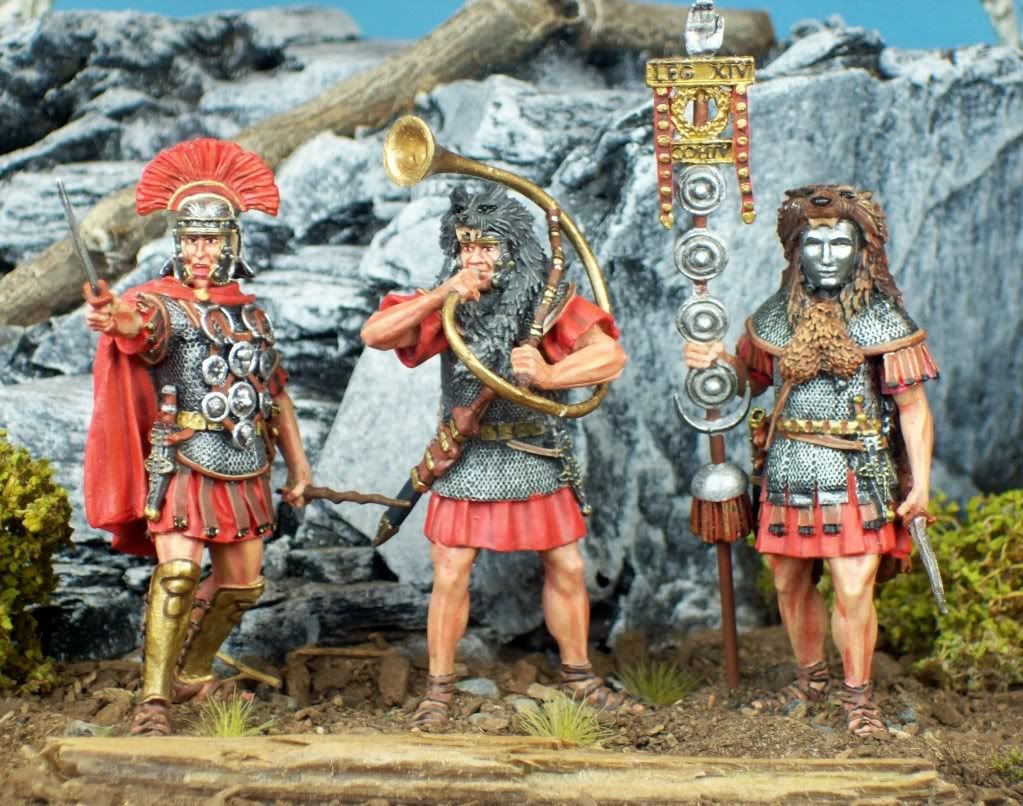
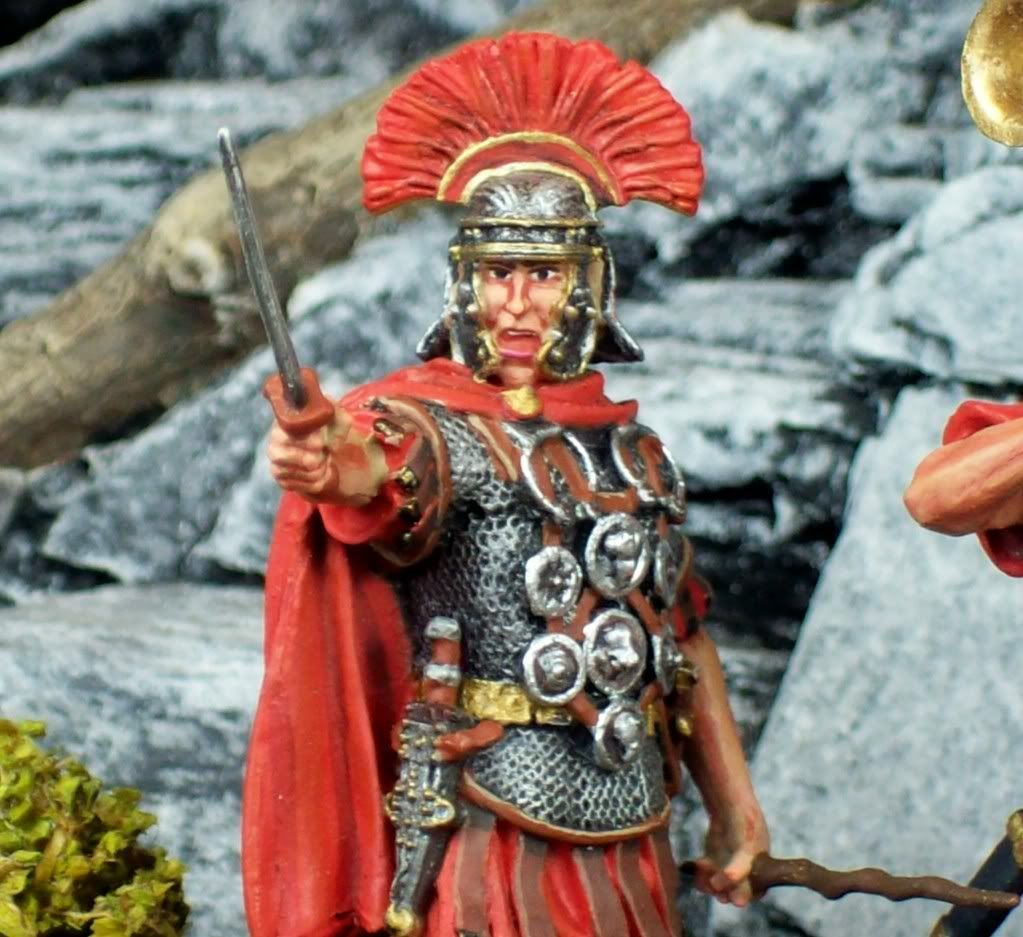
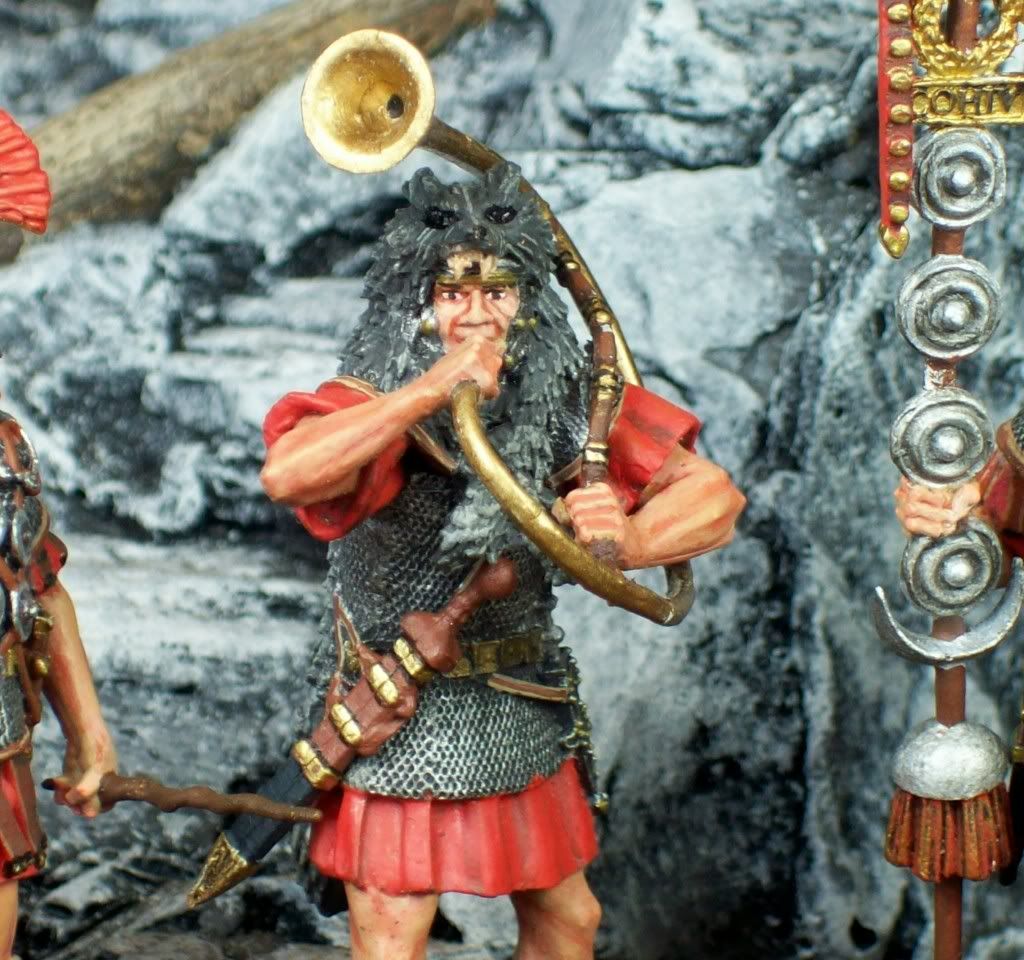
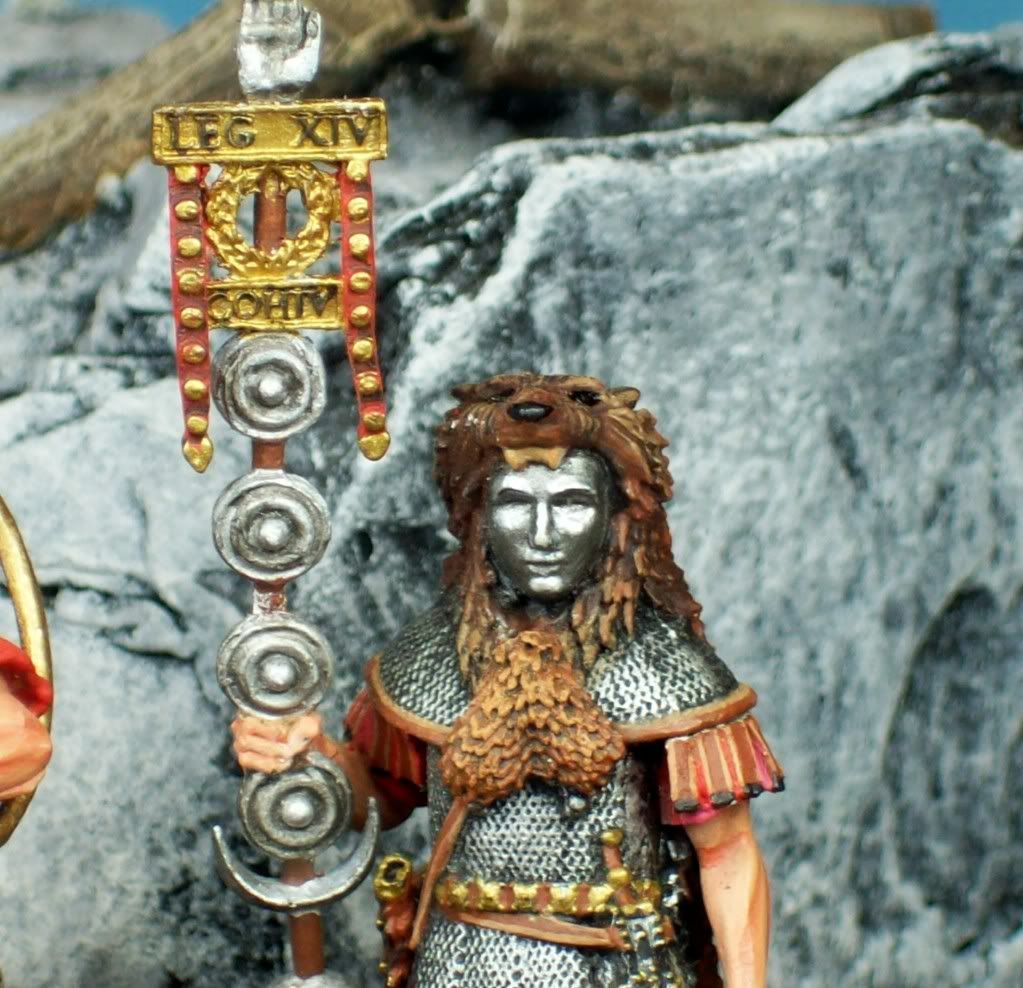
but like Larry David says...
"prett-ay good...prett-ay...prett-ay...prett-ay good"...




mikemiller1955
Lieutenant General
- Joined
- Aug 3, 2008
- Messages
- 17,607
mikemiller1955
Lieutenant General
- Joined
- Aug 3, 2008
- Messages
- 17,607
fishead19690
Command Sergeant Major
- Joined
- Nov 3, 2005
- Messages
- 2,555
Nice shots Mike! I love those new Roman and Barbarian figures. The back ground and ground cover looks Great!^&cool
mikemiller1955
Lieutenant General
- Joined
- Aug 3, 2008
- Messages
- 17,607
this debate over the "right" Gladius Roman sword seems moot to me...there are many examples of this "short sword" on the Internet...a lot of them are different in size and shape...some are straight...some are tapered...some have etching...some are smooth...the Roman Empire was around a long time...I'm sure there were developments in swords...I don't really care which is most popular on the forum and I don't care to debate it...
I prefer one that is sturdy...strong...won't bend or break and can be played with...if they need to be a tad oversized...I can live with that a lot better than frail or fragile...










I prefer one that is sturdy...strong...won't bend or break and can be played with...if they need to be a tad oversized...I can live with that a lot better than frail or fragile...










LordAnhausen
Private 1st Class
- Joined
- May 19, 2011
- Messages
- 170
this debate over the "right" Gladius Roman sword seems moot to me...there are many examples of this "short sword" on the Internet...a lot of them are different in size and shape...some are straight...some are tapered...some have etching...some are smooth...the Roman Empire was around a long time...I'm sure there were developments in swords...I don't really care which is most popular on the forum and I don't care to debate it...
I prefer one that is sturdy...strong...won't bend or break and can be played with...if they need to be a tad oversized...I can live with that a lot better than frail or fragile...
In the words of Smokey Robinson "i second that emotion"
The "Albion" website at http://www.albion-swords.com/swords/albion/swords-albion-mark-nextgen.htm#Roman
shows that even they sell about 10 different size and shape
Sahara
Command Sergeant Major
- Joined
- Apr 7, 2008
- Messages
- 2,661
I don't know if anybody is familiar with HBO's "Curb Your Enthusiasm"...
but like Larry David says...
"prett-ay good...prett-ay...prett-ay...prett-ay good"...




Mike great photos!!!!!! I really like what you did with the bases as well. I was debating on trying to paint them but looking at your photos I think I'm just gonna find some nice foliage to cover them up with. Once again great photos.
Users who are viewing this thread
Total: 2 (members: 0, guests: 2)


